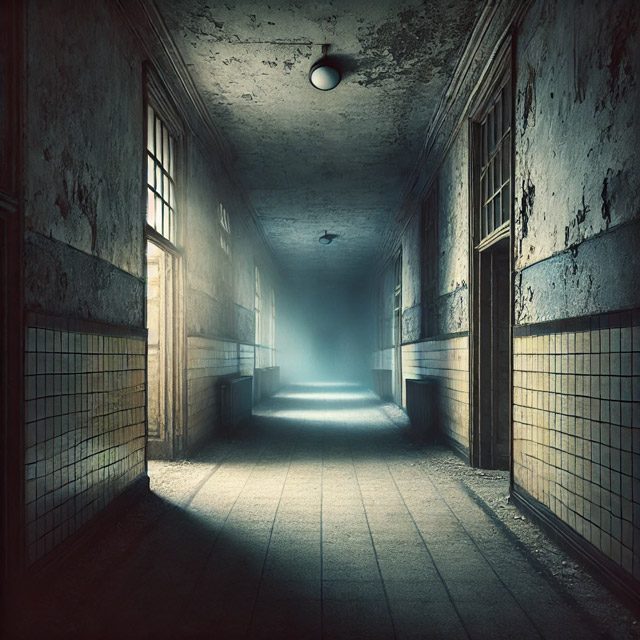
Liminal spaces hold a strange allure in the world of art. These in-between places, often undefined or transitional, spark a sense of mystery and unease that captivates both artists and viewers alike. But why are these spaces so intriguing? From empty hallways and abandoned stairwells to twilight skies and deserted parking lots, liminal spaces evoke feelings that range from nostalgia to outright discomfort. They are more than just places we pass through—they’re thresholds to different states of being, and in the hands of a skilled artist, they become doorways to new realms of interpretation.
Liminality has been embraced across various art forms, from painting and photography to installations and digital art. This fascination with the “in-between” offers artists a blank canvas to explore everything from existential ideas to societal transitions. Let’s step into this fascinating world and uncover how artists are using liminal spaces to communicate feelings, thoughts, and moments that are just beyond our grasp.
What Are Liminal Spaces?
Liminal spaces are neither here nor there—they exist in between defined areas or moments. The term comes from the Latin word limen, meaning “threshold,” and it’s often used to describe places that feel familiar but also slightly off. You’ve probably experienced this feeling before: walking through an empty shopping mall at night, or standing in an airport terminal during a layover, the eeriness of being in a place designed for people—but without any people around.
But it’s not just about physical spaces. Liminality can also refer to emotional or psychological states—moments of transition in our lives, like adolescence, grief, or moving to a new city. Artists have tapped into this duality to reflect human experiences that are hard to pin down, much like the spaces themselves.
A Brief History of Liminality in Art
The concept of liminality isn’t new. In fact, it’s been around for centuries. The idea was first formalized in anthropology by Arnold van Gennep in his 1909 book The Rites of Passage, where he described the liminal stage in rituals as the transitional phase between one state and another—such as between childhood and adulthood. Later, anthropologist Victor Turner expanded on this, noting how liminal phases involve ambiguity, uncertainty, and even potential transformation.
In art, liminality has long been explored, though perhaps without the academic label attached. The Renaissance masters like Leonardo da Vinci toyed with the idea of liminal spaces, capturing moments at dawn or dusk, when the world shifts from day to night or vice versa. The Impressionists, like Claude Monet, loved capturing the fleeting, transitional nature of light and shadow. Meanwhile, the Surrealists, especially Salvador Dalí, pushed liminal spaces into dream-like territories where reality blended with fantasy, leaving viewers to question what was real.
Why Are Liminal Spaces So Haunting?
Liminal spaces are eerie because they evoke a sense of the uncanny. They make us pause and reflect—whether we like it or not. We’ve all had that moment when walking through a place that feels almost normal but not quite. It might be the stark lighting, the echo of an empty room, or the stillness of a space that is usually bustling with activity. These spaces seem to capture time itself, freezing it in a suspended state, much like a photograph.
Psychologically, these spaces resonate with us because they mirror transitions in our lives. Just as an empty hallway sits between rooms, we too move through periods of uncertainty—between jobs, relationships, or even phases of life. Liminal spaces represent these moments when we are neither where we were, nor where we are going. This ambiguity can be disorienting, but it can also be a powerful creative force.
Famous Examples in Visual Art
Liminality is present in many iconic works of art, whether in obvious or subtle ways. Edward Hopper’s Nighthawks (1942) is a prime example. The diner depicted in the painting is brightly lit, but the surrounding streets are dark and empty, giving viewers a sense that they’re peering into a moment caught in time, suspended between what came before and what will happen after. The people inside the diner seem isolated, lost in thought—each experiencing their own liminal moment.
The street photographer Vivian Maier, known for her candid shots of urban life, captured countless liminal spaces in her work. Her images of empty alleyways, half-lit windows, and reflective surfaces evoke that same eerie, transitional quality. Maier’s photography feels like a meditation on the in-between, urging us to see beauty in the overlooked and forgotten.
Another powerful example comes from contemporary artist James Turrell, whose light installations often immerse the viewer in a liminal space. His works challenge our perception of space, using light to blur the boundaries between what we see and what we feel. In his piece Skyspace, Turrell plays with the perception of the sky, turning it into a shifting canvas that hovers between the real and the surreal.
The Role of Photography in Capturing Liminality
Photography has a unique ability to freeze liminal spaces in time. Photographers, like the aforementioned Vivian Maier, often focus on moments of transition. Street photographers, in particular, thrive in capturing these fleeting moments of liminality in urban environments.
One example is Todd Hido, whose haunting images of suburban houses at night evoke a deep sense of mystery. His photos are empty, devoid of people, but the lit windows suggest life just out of frame. The empty streets, bathed in a strange light, offer viewers a glimpse into the unsettling beauty of liminal spaces.
On the other hand, photographer Gregory Crewdson’s elaborately staged images are like frozen scenes from a film—each one a liminal moment suspended in time. His work captures suburban America in a state of decay, uncertainty, and eerie calm. The strange lighting, empty spaces, and suspended action in his photographs make them feel like a dream—or more appropriately, a nightmare.
The Influence of Digital Art and VR
With the rise of digital art and virtual reality (VR), artists are now pushing the boundaries of liminal spaces even further. In digital art, creators can manipulate environments and create immersive experiences that challenge our perception of reality. VR, in particular, offers the chance to step into a liminal space, allowing users to explore these uncanny environments in ways that traditional art forms cannot.
One interesting example is the artist Rachel Rossin, who creates virtual reality experiences that allow users to walk through fragmented, dreamlike spaces. Her work captures the feeling of being caught in a digital liminal space—neither fully in the physical world nor completely immersed in the virtual one. These VR experiences amplify the eerie, in-between feeling of liminal spaces, blurring the lines between what is real and what is simulated.
How Liminal Spaces Reflect Society
Liminal spaces aren’t just personal—they can reflect broader societal transitions. Consider the work of Ai Weiwei, the Chinese artist and activist, whose installations often deal with displacement and borders—liminal spaces in their most political form. His 2017 work Law of the Journey featured an enormous inflatable boat filled with faceless human figures, representing the global refugee crisis. This installation confronts viewers with the harsh reality of liminal spaces that many people are forced to inhabit—caught between countries, between homes, between futures.
Similarly, in the aftermath of the COVID-19 pandemic, images of deserted cities, empty airports, and abandoned public spaces became iconic representations of liminality. These places, once full of life and activity, were suddenly transformed into unsettling, quiet voids—reminding us of our own vulnerabilities and the fragility of the everyday.
Liminal Spaces in Popular Culture
It’s not just the fine arts that embrace liminality—popular culture has picked up on it, too. Video games, for instance, often use liminal spaces to create atmosphere and tension. In games like Silent Hill or The Last of Us, players move through abandoned buildings, empty streets, and decayed cities, all designed to make the player feel unsettled and uneasy. These in-between places become metaphorical for the characters’ internal struggles and transitions.
Even TV shows and movies use liminal spaces to evoke certain moods. Consider Stanley Kubrick’s The Shining, where the empty halls of the Overlook Hotel play a starring role in the film’s unsettling atmosphere. These spaces are designed to feel familiar yet disturbingly wrong, amplifying the film’s themes of madness and isolation.
Why We’re Drawn to Liminal Spaces
So why are we so fascinated by liminal spaces? Perhaps it’s because they resonate with something deep within us. As human beings, we’re constantly in transition—from one phase of life to another, from one place to the next. Liminal spaces remind us of the uncertainty and mystery that accompany these transitions.
But liminal spaces are also places of possibility. Just as they represent uncertainty, they also symbolize the potential for change. These spaces exist on the threshold of what was and what could be. Artists, by exploring these spaces, invite us to pause and reflect on our own journeys, to find meaning in the in-between moments of life.
Key Takeaways:
- Liminal spaces are transitional, often eerie environments that evoke a sense of the uncanny.
- Artists throughout history, including Edward Hopper and Salvador Dalí, have used liminal spaces to explore complex human emotions.
- Photography, particularly street and urban photography, excels at capturing the fleeting, mysterious quality of liminal spaces.
- Digital art and VR are pushing the boundaries of how we experience liminal spaces, offering new ways to immerse ourselves in these environments.
- Liminal spaces reflect broader societal and political transitions, as seen in the work of artists like Ai Weiwei.
- Popular culture, from video games to films, also taps into the unsettling power of liminal spaces to create atmosphere and tension.
Frequently Asked Questions (FAQs)
- What is a liminal space in art?
Liminal spaces in art are transitional or undefined spaces that evoke feelings of mystery, unease, or nostalgia. Artists use them to explore emotions and ideas that are in flux. - Why are liminal spaces unsettling?
Liminal spaces feel eerie because they exist between defined states, such as empty hallways or deserted streets, making them feel familiar yet disturbingly incomplete. - How do photographers capture liminal spaces?
Photographers, like Vivian Maier and Todd Hido, capture liminal spaces by focusing on moments of transition, often in empty or abandoned urban settings. - Can liminal spaces exist in digital art?
Yes, digital artists use virtual reality and other mediums to create immersive liminal spaces, allowing viewers to explore eerie, transitional environments in new ways. - What are some famous examples of liminal spaces in art?
Famous examples include Edward Hopper’s Nighthawks, Salvador Dalí’s surreal landscapes, and the digital installations of James Turrell.







